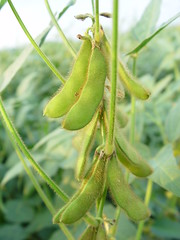Daniel Charles wrote for The Salt 11 March 2012, Why Monsanto Thought Weeds Would Never Defeat Roundup,
First, the company had been selling Roundup for years without anySo they thought small scale would be the same as saturating 90+% of every corn, soybean, peanut, and cotton field in the U.S. and numerous other countries with virulent poisons. Because they wanted the money.problems. Second, and perhaps most important, the company’s scientists had just spent more than a decade, and many millions of dollars, trying to create the Roundup-resistant plants that they desperately wanted — soybeans and cotton and corn. It had been incredibly difficult. When I interviewed former Monsanto scientists for my book on biotech crops, one of them called it the company’s “Manhattan Project.”
Considering how hard it had been to create those crops, “the thinking was, it would be really difficult for weeds to become tolerant” to Roundup, says Rick Cole, who is now responsible for Monsanto’s efforts to deal with the problem of resistant weeds.
-jsq


